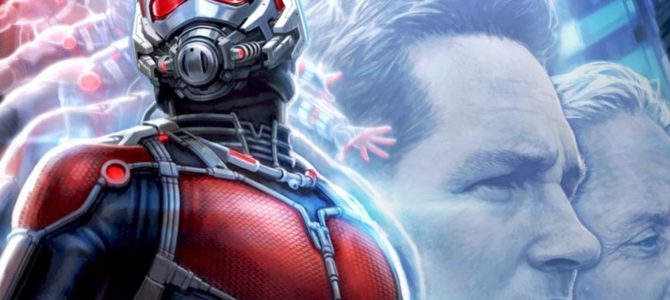When Paul Rudd was cast as Ant-Man, Marvel purists were aghast. Rudd, who once upon a time was a dramatic actor, had settled into Judd Apatow comedies. But director Peyton Reed wisely capitalized on Rudd’s comedic background by making the actor embarrassed about his name, and — in a pantheon where even the Capresque Captain America expresses angst — as fun and lighthearted as Spiderman.
Reed and Rudd were intelligent enough to know that a comedic starting point allowed them to bring some drama into the mix (Rudd, who did stellar work in “The Great Gatsby” was fully capable of this).
Like its predecessor, “Ant-Man and The Wasp” follows this winning formula. Former criminal Scott Lang (Rudd) is still feeling, if not prat-falling his way around his powers. Luckily he is given a girl-friend and partner (Evangeline Lilly) who is the more effective superhero, and spends much of the movie trying to get Rudd up to speed. All of this creates a comedic repartee, which, like other Marvel films, has the heroes discuss dating and what to order for lunch while delivering crunching blows to the bad guys.
In terms of fun, the film delivers the goods, along with a touching note. As created by Stan Lee and Jack Kirby in the early 1960s, however, Ant-Man was anything but humorous. Indeed, in terms of motivation and mental health he was the closest of the Marvel characters to the revenge-driven Batman.
Of all of Marvel’s early 60s characters, Ant-Man, alongside Iron Man, was the most politicized. Both were sturdy anti-Communists. “Iron Man” was born in North Vietnam when Tony Stark, a member of the military-industrial complex, had to create a weaponized suit to escape from his Vietcong captors. Stark swore vengeance on the Communist bloc when the Vietcong murdered the captive scientist who helped him develop the suit.
The original Ant-Man, Hank Pym, was also born out of the Cold War. In his premiere 1962 comic, the scientist was targeted by Soviet agents on a mission to steal Pym’s formula developed to protect Americans from the radiation effects of Soviet atomic bombs in the event of a nuclear strike on the United States.
As Soviet agents ransacked Pym’s lab, the scientist sought to escape them by becoming Ant-Man. Unlike Rudd, Pym did not stare in wonderment at his powers. Instead he was on a dire Cold War mission with horrendous circumstances if he failed to stop them: “The commies will have the anti-radiation gas, which will put them miles ahead of us in the Cold War!”
Later issues were even more politicized. In a 1965 story, Lee and Kirby gave Pym a very personal reason for suiting up as Ant-Man to fight the Communists. When Pym and his refugee wife inexplicably visited the Soviet satellite Hungary, the regime she escaped from, the regime murdered her.
Pym next swore an oath as eerie and obsessive as Bruce Wayne’s. But whereas Batman declared war on all crime when an apolitical thug murdered his parents, Pym’s target was political. Donning the Ant-Man suit, he swore to battle the “tyranny” that tramples “the underdog.”
But Lee and Kirby never really knew what to do with Pym. Perhaps they sensed that shrinking down to size and commanding ants was a pretty ineffectual power; and as a result, they remade him several times. They gave him the ability to grow rather than shrink and a new moniker, Giant-Man. For some bizarre reason, they next kept his powers but changed his name to Goliath. When that didn’t work they returned him to insect size, but this time around gave him a new name, Yellow Jacket, and a niftier costume.
Later Marvel writers incorporated these transformations geared toward generating sales (Lee has always been an unashamed huckster) into the stories. In this conception, Hank Pym constantly remaking himself was due to an identity crisis and feelings of inadequacy. Later writers deepened Pym’s issues, making him a pill-popping depressive who, rather than taking his insecurities out on criminals, instead expressed them by beating his wife (the Wasp).
The makers of the film series rightly avoid featuring Pym as the main character (although they do give him a heroic history of fighting the Soviets in the 1960s, which is refreshing given Hollywood’s emphasis on political correctness), and make the more fun-loving Scott Lang version of Ant-Man the main character. A film with Pym as the feature character would not only ruin the fun, but also make the character issues unpalatable.









